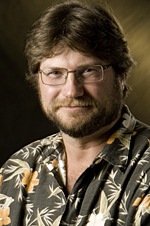Normal.dotm
0
0
1
570
3250
New Mexico Highlands University
27
6
3991
12.0
0
false
18 pt
18 pt
0
0
false
false
false
/* Style Definitions */
table.MsoNormalTable
{mso-style-name:”Table Normal”;
mso-tstyle-rowband-size:0;
mso-tstyle-colband-size:0;
mso-style-noshow:yes;
mso-style-parent:””;
mso-padding-alt:0in 5.4pt 0in 5.4pt;
mso-para-margin:0in;
mso-para-margin-bottom:.0001pt;
mso-pagination:widow-orphan;
font-size:12.0pt;
font-family:”Times New Roman”;
mso-ascii-font-family:Calibri;
mso-ascii-theme-font:minor-latin;
mso-fareast-font-family:”Times New Roman”;
mso-fareast-theme-font:minor-fareast;
mso-hansi-font-family:Calibri;
mso-hansi-theme-font:minor-latin;
mso-bidi-font-family:”Times New Roman”;
mso-bidi-theme-font:minor-bidi;}

Michael Petronis Named Professor of the Year at Highlands
New Mexico Highlands University environmental geology Professor Michael Petronis was named professor of the year for 2009 — 2010.
The Highlands University Geological Society, a student club, nominated Petronis for the award, writing in its application, “Dr. Mike S. Petronis has devoted endless time, energy and effort to go above and beyond his faculty duties to ensure that his students not only receive a well-rounded education, but have opportunities to participate in field work and research.
“Mike also spends countless hours writing research grants to provide funding for student involved research,” the students wrote.
Petronis is the faculty adviser for the Highlands University Geological Society.
“Dr. Petronis is so student oriented and extremely dedicated,” said Lorraine Garcia, a senior majoring in geology who is vice president for the geological society. “He brings a very hands-on approach to learning to the classroom, and teaches us how to apply what we learn in the real world.
“He spends countless hours of his own time on weekend geology field trips where we learn how to identify geological features, and do mapping and survey work. It’s awesome to have someone with his scientific credentials as our professor,” Garcia said.
Petronis joined the university’s faculty in 2006, after earning his doctorate in geology with an emphasis in geophysics from the University of New Mexico. At Highlands, Petronis teaches a number of geology and natural sciences courses such as structural geology, geophysics, hydrology, geomorphology and geographic information systems.
“It was a big surprise to me to be nominated by my students for professor of the year,” Petronis said. “I was honored and humbled to be selected.
“It’s rewarding when students can extrapolate concepts they learn in the classroom to better understand field geological relationships. That’s the fun part of teaching,” Petronis said.
Petronis has published extensively and has been successful in securing scientific grant funding for the university.
One example is a National Science Foundation grant he and fellow geology professor Jennifer Lindline were awarded in 2008 to purchase instruments for a dedicated Paleomagnetic — Rock Magnetism Laboratory at Highlands to study magnetic properties of earth materials, with a focus on environmental, geological, and archaeological applications.
The only other paleomagnetism facility in the state is at the University of New Mexico in Albuquerque.
Petronis has established an international reputation for environmental geology research. He will join an international scientific expedition to the Arctic Circle this summer to research the Snowball Earth Hypothesis.
He helped write the grant proposal for the research initiative, which is funded by a $1.2 million grant from the United Kingdom’s National Environmental Research Council.
“The Snowball Earth Hypothesis describes a time period when glaciers covered the entire planet from pole to pole multiple times during the Neoproterozoic Era approximately 750 million years ago,” Petronis said. “The importance of this geological research is that the rocks we will be studying preserve a record of dramatic, rapid climate shifts, which caused a reverse greenhouse effect, meaning the Earth and its oceans froze.”
Petronis will drill sedimentary rock samples using a modified chain saw with a diamond-tipped rock coring drill. He will bring the samples back for analysis in the university’s paleomagnetic laboratory.
Petronis said geology students from Highlands University will have opportunities to conduct lab research related to the Snowball Earth Hypothesis project, with the goal of presenting their findings at geosciences meetings.
